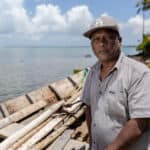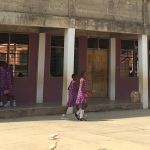Putting Outcomes Above Ideology: Why the Development Sector Must Recognize the Critical Role of Low-Fee Private Schools in Addressing the Global Learning Crisis
The devastating learning loss caused by the COVID-19 pandemic has exacerbated the global learning crisis, with up to 70% of children in low- and middle-income countries (LMICs) facing learning poverty – i.e., unable to read and understand a simple text by age 10. Yet despite the urgency of the situation, within the development sector, there is often a significant disconnect between the global debate over whether the non-state sector should play a role in the global education landscape – and the reality on the ground.
With less than a decade left to achieve SDG4’s goal of quality education for all, we can no longer afford to get bogged down in this debate. The development sector’s resistance to private education options has long been a roadblock to the growth of affordable alternatives to often-struggling public schools in LMICs. It is time to put ideology aside and recognize the reality that a mixed education economy is already serving children and families worldwide. With more than 244 million children globally out of school, it is critical that the non-state sector – which includes for-profit schools, education-focused NGOs, faith-based schools, pedagogy-specific schools such as Montessori, and other alternatives to public schooling – is recognized by all stakeholders working towards SDG4. It’s also essential that the non-state education sector is integrated by national governments and funders into a governed ecosystem that delivers tailored support to help all children get a quality education – whatever school setting they are in.
The Emergence of Low-Fee Private Schools in Low-and Middle-Income Countries
In many low- and middle-income countries, a combination of factors – including higher population growth, lower tax to GDP ratios, younger populations and shorter life expectancies, as well as external factors such as spending cuts to International Monetary Fund (IMF) programs – make it impossible for national governments to meet the education financing needs of their countries. Additionally, in times of crisis, governments are even more dependent on support from international bodies such as the IMF, which comes with conditionalities that often limit national spending on education. According to UNESCO’s most recent Education Finance Watch report, in 2020, governments accounted for less than half of total education spending in low-income countries. As a result, household spending makes up a significant portion of overall education financing, and there’s a growing dependency on this source of funding – including among families in lower-income segments. We all want free quality education for all children, but in the LMICs where this dream is furthest away, eliminating fee-charging schools would mean reducing total education financing by up to 40%.
This is one of the factors, in combination with other systemic failures, that has led to the increasing prevalence of low-fee private schools (LFPS). Schools are considered “low-fee” if their tuition is affordable to low-income community members: The threshold differs depending on the country, but in Ghana, where the IDP Foundation has traditionally focused, schools charging GHS 402 per year (around US $40) or less are considered LFPS.
Low-fee private schools are predominantly founded and run by independent education entrepreneurs, responding to a clear need they see in their own communities. These schools can help to bridge the education gap between the richest and poorest segments of the population in countries where income disparity has historically been one of the biggest barriers to sustainable development and economic growth. The existence of LFPS – particularly those that offer fees low enough to serve parents who would otherwise send their children to oversubscribed public schools – may also help to prevent overcrowding in government-funded schools, and could have a positive impact on improving learning outcomes across the education sector. However, the learning outcomes for students in LFPS tend to be just as low as those of their peers in state schools. In other words, parents are paying more but not always getting more. This is why the global community needs to commit to improving quality in all schools: Interventions to raise the quality of the education system need to include the entire system.
Given the key role these schools can play in addressing the global learning crisis, we at the IDP Foundation, alongside our partner organisations, have been pleased to see that increasing attention is being paid to the LFPS sector. For instance, non-state education is the theme of UNESCO’s latest Global Education Monitoring report, which has been a significant driver of new conversations about the role of the sector. In addition, USAID recently announced US $15 million in new funding to support low-fee private schools in northern Ghana. However, it still largely remains the case that the sector receives limited recognition from governments and little to no support from aid organisations or philanthropies.
The Resilience of Private Schools During the COVID-19 Pandemic
At the IDP Foundation, through partnerships with local actors, we have supported nearly 1,000 LFPS in Ghana over the past 13 years, and we have seen firsthand the positive impact they have on communities. In Ghana, the affordable non-state education sector is currently responsible for educating over 2 million children, and it is forecast to represent almost 30% of total enrollment by 2025 – despite the challenges of the pandemic.
When COVID-19 hit, there were significant concerns about the ability of these schools to reopen following mandated closures. However, when we commissioned a post-reopening study of the schools that we support through our flagship Rising Schools Program, we found that although 50% of schools assessed experienced low enrollment in the period immediately after reopening, within six months after reopening, 91% of schools were at 50% enrollment or above. In addition, the study also reported that the same percentage of school owners (91%) expressed confidence that their schools would remain open. This speaks to the resilience of the sector, the commitment of families to seeing their children attend school, and the determination of proprietors who never wavered in their dedication to providing education in their communities.
The Need for Greater Support of Non-State Education in LMICs
We believe this demonstrates that LFPS have established a solid foundation in LMICs – but further support is needed. To that end, in the IDP Foundation’s latest policy brief, we argue that there needs to be a mindset shift around including non-state schools in government interventions, including the provision of learning materials and teacher training, as well as assessing schools to ensure that they are meeting minimum standards, and including representatives of non-state actors in education-related decision making spaces. In Ghana, the decades before the pandemic (starting in 2001) saw an increase in enrollment in primary education across the entire education landscape. To prevent a ripple effect caused by the pandemic that could seriously impact any education gains made over these past two decades, government and philanthropic programs must support students across all school settings – otherwise, we risk leaving a significant number of children behind.
With the global learning crisis exacerbated by the pandemic, and many countries staring down imminent recessions, it is critical that the development sector does not stand in the way of progress by tying funding to provisions that prohibit the support of non-state education. An effective tool for achieving SDG4 is at our fingertips – but because of unrealistic demands on governments for public-only schooling, we are getting further away from practical policies that have the potential to improve educational outcomes.
At the Transforming Education Summit this week, delegates will seek to reimagine education systems for today and tomorrow. This presents a key moment to recognize that the affordable non-state sector has already organically changed the educational landscape of many countries. We must acknowledge LFPS’ rightful role in this evolving landscape and ensure that they are properly regulated, integrated and supported if the broader sector is to recover from the pandemic and ensure that every child has access to quality education.
Corina Gardner is the CEO of the IDP Foundation and Stephen Caleb Opuni is the Country Director for the IDP Foundation in Ghana.
Photo courtesy of GPE/Kelley Lynch.
- Categories
- Coronavirus, Education



